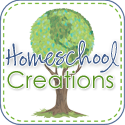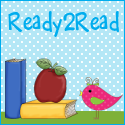In this post I will tell you about teaching some beginning phonics to your emergent reader. As usual these are things you can do spending little or no money. Some paper and pens and you can create the needed materials! If you ant to get a little more ambitious, you can use your printer and print out some free printables. This is not a set of lessons but a collection of ideas that you will move through at your own pace. You can be doing these activities at the same time you are working with your child on the reading and writing sight words activities below:
Kindergarten Sight Words and Early Reading Skills
What you need to know to get started teaching your Kindergartner to read including a look at some of the Common Core Standards for Kindergarten reading.
Kindergarten Sight Word Sentences
After you know about teaching sight words to your Kindergartner you are ready to move on to sentences.
Kindergarten Sight Words Reading Books
Once you start introducing your child to the sight words he is ready for his first emergent-reader book.
This is the balanced approach, learning both sight words and phonics side by side.
In the
Early Alphabet Learning and the Name Game post I talked about the difference between phonemic awareness and phonics. Phonemic awareness comes first in a growing reader. First they need to be able to hear and differentiate the sounds before they can connect symbols to them.
The previous posts have talked about teaching your child some of the basics of phonemic awareness: parts of a word, sequence of sound, separation of sounds.
When your child learned the sounds of the letters in his name in "The Name Game" he was learning beginning phonics. Your child is also learning to read and write some sight words in
Kindergarten Sight Words and Early Reading Skills.
Now you are ready for the next step, decoding or "sounding out" the most basic words. Your child is ready if he knows about 2/3 of the letters of the alphabet. He does not need to know all of them. He will learn the rest along the way.
These lessons will teach the following Common Core State Standards for Kindergarten:
READING STANDARDS: FOUNDATIONAL SKILLS
Print Concepts
1. Demonstrate understanding of the organization and basic features of print.
- a. Follow words from left to right, top to bottom, and page by page.
- b. Recognize that spoken words are represented in written language by specific sequences of letters.
- d. Recognize and name all upper- and lowercase letters of the alphabet.
Phonological Awareness
2. Demonstrate understanding of spoken words, syllables, and sounds (phonemes).
- b. Count, pronounce, blend, and segment syllables in spoken words.
- c. Blend two to three phonemes into recognizable words.
- e. Isolate and pronounce the initial, medial vowel, and final sounds (phonemes) in three-phoneme (consonant-vowel-consonant, or CVC) words.* (This does not include CVCs ending with /l/, /r/, or /x/.)
Phonics and Word Recognition3. Know and apply grade-level phonics and word analysis skills in decoding words both in isolation and in text.
- a. Demonstrate basic knowledge of one-to-one letter-sound correspondences by producing the primary or many of the most frequent sound for each consonant.
- b. Associate the
long and short sounds with common spellings (graphemes) for the five major vowels.*
- d. Distinguish between similarly spelled words by identifying the sounds of the letters that differ.
The most basic words to sound out are called CVC words: Consonant-vowel-consonant. These are three letter words with three distinct phonemes.
First, you want to make sure your child has the phonemic awareness, before moving on to using symbols (letters). Your child needs to be able to segment the word into the individual sounds, and blend the sounds back together. Here is a song and game that you and your child play to practice three phoneme words:
B stands for the letter B
/B/ is the sound B makes (careful not to say "buh", practice making the /B/ sound, and other consonants, without the "uh" on the end)
Sing to the tune of "The Wheels on the Bus"
The sounds in the word go /C/ /A/ /T/
/C/ /A/ /T/
/C/ /A/ /T/
The sounds in the word go /C/ /A/ /T/
Can you say the word?
With a little luck your child will say "cat!" If not practice breaking it down slowly and then putting the sounds together more quickly. Keep practicing with different words. This is easy to do on the go, in the car, etc. More words to try:
dog, bed, bat, pot, leg, sun, pig, log, dig
Any three phoneme word will do, even three phoneme words with more letters like: sheep, meat, goat. At the phonemic awareness level all that matters is that it has three phonemes. When we move onto phonics, using letters, we will begin by only using three letter, CVC, three phoneme words.
Once you know your child can hear the individual sounds and put them back together, practice giving your child a three phoneme word and see if they can break it into the three phonemes.
Next you are ready for sound boxes! Also known as
Elkonin Boxes these are a great hands on way to practice the letter sound connection. Read more about how these work (including a nice list of literature books you can use in connection with your CVC work) at
Reading Rockets.
Notice the picture of the hat and the three boxes below it. That is one box for each phoneme. Ask your child what the picture is (you may need to clarify that it is a hat, not a cowboy hat). Ask your child to say the work hat slowly along with you. While you say the sounds show him how you can push your finger into each box as you say each sound:
/H/ push finger into the first box
/A/ push finger into the middle box
/T/ push finger into the last box
As you are talking to your child use the words first, next (or middle) and last for the three sounds. This will reinforce the first letter of the word, the next letter of the word and the last letter of the word. They will use this first-next-last as they read and write longer and longer words.
More on
teaching phonemic awareness using Elkonin Boxes.
Print out or create a set of sound boxes with pictures (note this link includes a list of both CVC words and three phoneme words with more letters, just print the CVC ones). You may want to print some on card stock and either laminate them, or put them in page protectors when you use them. Practice just saying the words and the individual sounds while you push your fingers into the correct boxes. You can make it more fun by pushing objects into the boxes: bingo markers, checkers, small toy cars, be creative!
A collection of multi-sensory ideas for teaching segmenting and blending at
Make, Take, & Teach:
After your child is confident practicing with the sounds then you are ready to add the letters. Start with a word in which you know they know the letters that go with the sounds. Say the work slowly and have your child tell you which sound goes in each box. If your cards are laminated or in a page protector you can write on them with a dry erase marker and use them over and over.
Example with cat:
Parent: What sound do you hear in the first box?
Child: /C/
Parent: Yes, the /C/ sound is in the first box. That is the first sound in the word. What letter makes the /C/ sound?
Child: C
Parent: Yes, C says /C/. I'm going to write a C in the first box. C is the first letter in the word cat.
Repeat with the middle and last box.
Remember to write with lower case letter.
If your child is unsure of the sound or the letter, just tell them. With practice they will memorize them.
Once you have started the letter work, and have modeled a few, you can have your child write in the letters. You can also use letter manipulatives on the CVC cards:
An example of
laminated cards with letter tiles:
This is an example of
CVC Word Puzzles from Little Blossoms. Print out some CVC sound boxes and some magnetic letters, foam letters, or letter tiles and have them find the sound and then the letter that goes in each box.
Play with your words
- Build a CVC word with magnetic letters or letter tiles and ask them to read it.
- Tell the the word, give them the letters and ask them to build it.
- Have them change letters in the word to make new words. Practice changing the first letter, the middle letter (the vowel) and the last letter.
- Talk about vowels. Put out all of the vowels and talk about what letters are the vowels. put down the first and last letter of a word and ask them to tell you or show you which vowel to put in the middle.
- Build a word and change the vowel: pat becomes pit, and then pot.
 |
| Playing with CVC words. |
 |
| What letter will I need to change to make it say, "tan"? |
 |
| That's right, take away the M and put a T at the beginning and now it says, "tan". |
 |
| Now can you make it say, "can"? |
More ideas for playing with a practicing CVC words
The Picnic Pals has this great idea of using a cheap cookie sheet and painting boxes (this idea is windows n a house, but get creative, what could you do?) This works well with magnetic letters.
I love this idea from
Kindergarten Crayons! Using this method you can easily change the first, middle, or last letter to make different words:
bag -> beg -> big -> fig -> fit -> fat -> cat
Take a look at the great ideas here:
CVC Word Flip Books: 10 Games for Beginning to Advanced Readers
Word Family Building Blocks
There are lots of CVC puzzles commercially available.
Look for related CVC on-line games. The
Word Machine on
starfall.com works on CVC words.
There are also lots of
free printables on-line, including CVC worksheets. Before you print out worksheets make sure that is something that your child likes to do. Some children will find a worksheet intimidating or tedious but will gladly do something more hands on like putting letters on a card. Remember to keep it fun an engaging!
Finally, you can start to include sounding out simple CVC words your child comes to when they are reading their
sight word sentences and
reading books.





















































